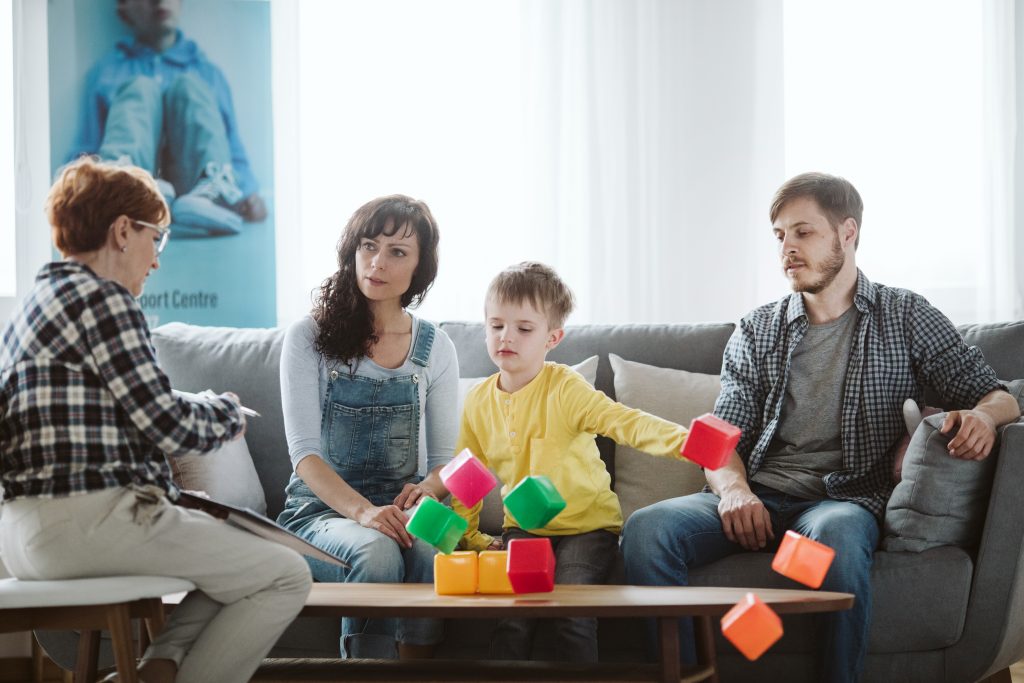
What is self-regulation?
Self-regulation is our ability to manage and control our own attention, energy levels, and emotions in ways that help us build positive relationships and a sense of wellbeing. As adults, each of us have a variety of strategies that we use to respond to situations, remain calm and return to a regulated emotional state. At times we may have to manage our responses to situations and navigate through different states of regulation.
States of regulation may include the following:
- Under-stimulated – For example; disappointed, sad, sick, lethargic, tired, bored
- Regulated – For example; calm, happy, tolerant, interactive, content, co-operative
- Heightened – For example; annoyed, irritated, overwhelmed, frustrated, anxious
- Loss of control – For example; enraged, terrified, destructive, aggressive, overly excited
Typically, self-regulation develops gradually, from birth to young adulthood. During this time we strengthen our ability to self-regulate by building upon existing skills. Through early childhood and adolescence self-regulation skills continue to increase.
What is dysregulation?
When we have difficulty responding to situations in a calm and emotionally flexible way this is known as emotional dysregulation. When this happens often, it can lead to difficulties with relationships, learning, wellbeing and the ability to cope in stressful situations.
There are many biological, emotional, cognitive, social or sensory stressors that may lead to dysregulation such as:
- Disrupted or lack of sleep
- Unhealthy diet
- Changes or unpredictable routines
- Inconsistent modeling of emotions or support from adults
- Sensitivity to environmental stimuli, such as sound or lights
If your child shows signs of having difficulty with regulation, a consistent, supportive and empathetic response is needed to help them manage and learn coping skills.
What is external regulation?
As the beginnings of self-regulation are still developing in young children, infants are not able to regulate on their own. They rely on responsive parenting to help them regulate. From birth, we watch and listen to our infant children for clues as to their emotional state (For example, frightened, happy and angry). By responding to our child’s needs, a trusting relationship is built.
What is co-regulation?
You can support your child to learn how to identify their own needs and when to look for help. This begins with modelling how to control and express our own feelings and actions appropriately. The development of self-regulation relies on a strong foundation of supportive relationships.
Helping children learn to self-regulate
You can help your child to recognize and process their own feelings by describing them (e.g., “you look sad”) and suggesting ways to work through it (For example, “Would you like to find another toy?” or “Do you need a hug?”). By learning to identify their emotions, your child can begin to practice ways to manage situations.
Here are some tips that you can use to help your child learn to self-regulate:
- As much as possible, use a calm and composed manner
- Be warm, responsive, and supportive.
- Be as calm and consistent as possible in your response to situations
- Maintain a calm, safe and consistent environment
- Label and acknowledge your own and your child’s emotions
- Coach your child to use words or pictures to identify their emotions
- Provide opportunities to practice self-regulation skills together at times when things are calm
- Encourage and praise your child’s efforts
Observe your child through a variety of situations to get a better understanding of how they are regulating their emotions and responding to their environment. The following chart will help you to plan.
| State | Strategies for children | Adult supports |
|---|---|---|
Under-StimulatedDisappointed, sad, sick, lethargic, tired, bored |
|
|
RegulatedCalm, happy, tolerant, interactive, content, co-operative |
|
|
HeightenedAnnoyed, irritated, overwhelmed, frustrated, anxious |
|
|
Loss of ControlEnraged, terrified, destructive, aggressive, overly excited |
|
|
Remember…
A safe, secure environment and positive relationships create opportunities for your child to co-regulate along with you. Parents, caregivers and educators play a vital role in supporting a child’s social and emotional development, which includes their ability to manage and respond to stress appropriately.
When children can self-regulate, they are able to navigate through challenges and make productive choices. Knowing how to self-regulate is an important skill that supports their physical, emotional, and social wellbeing.
